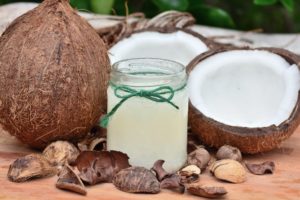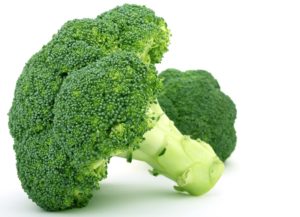Carboxymethyl Cellulose: A Common Food Additive that May Damage the Gut

Most likely, you’ve never heard of carboxymethyl cellulose or cellulose gum. However, most people consume it on a regular basis. Officially, carboxymethyl cellulose is a food additive used as a thickening, binding and emulsifying agent in foods and other products. It is produced by reacting natural cellulose—plant fiber—with “chloroacetic acid” in an alkaline solution.
Carboxymethyl cellulose is found in numerous products. It is commonly used as a thickener in ice cream and yogurt, beverages, desserts and baked goods. It’s also found in cosmetics, eye drops and toothpaste. In addition, it’s frequently used as a binding agent in medications and nutritional supplements.
Similar to maltodextrin, another food additive I’ve discussed previously, carboxymethyl cellulose is approved for food use, yet research has uncovered some concerning effects from its consumption.
What Does the Research Show?
Initial research on the use of carboxymethyl cellulose in tampons found that the compound appeared to feed bad bacteria that can increase risks for toxic shock syndrome (Tierno 1981, Hanna 1982). Toxic shock syndrome is a life-threatening condition caused by bacterial growth on tampons left in for too long.
Increased Inflammation
Early animal studies also showed repeated exposure in the nose caused mild to moderate inflammation by four weeks (Ugwoke 2000). A 1% solution used in the eyes after LASIK surgery in humans also appeared to provoke inflammation that required intense topical steroid treatment to resolve (Samuel 2002).
More concerning were reports that started to emerge suggesting gastrointestinal inflammation with consumption of carboxymethyl cellulose. In immune-deficient mice, carboxymethyl cellulose caused a “massive bacterial overgrowth” and inflammation in the small intestine. Due to the similarity with inflammatory bowel disease, the authors suggest that carboxymethyl cellulose may be a contributing factor to its development (Swidsinsky 2009).
Additional Negative Effects

Further research using low doses of carboxymethyl cellulose in mice found increased inflammation, blood sugar dysregulation, obesity, and colitis. The authors again suggested that the compound may be contributing significantly to negative health outcomes in humans (Chassaing 2015).
Worryingly, the low grade inflammation promoted by carboxymethyl cellulose appears to increase risks for colon cancer and cancer of the small intestine (Viennois 2017, Viennois 2021). A model of the human digestive tract also confirmed the findings that carboxymethyl cellulose changes human gut flora and induces intestinal inflammation (Chassaing 2017). The effects appear at least partially due to damage of the protective layer of intestinal mucus found throughout the digestive tract (Lock 2018).
Behavioral Effects
Studies in mice have found negative effects on behavior with the consumption of carboxymethyl cellulose as well. Similar to other research, consumption of carboxymethyl cellulose was found to increase obesity, intestinal inflammation and negatively impact gut flora. However, they also found changes in anxiety behaviors in male mice, with decreased socialization in females (Holder 2019).
Potential Negative Effects When Used in Surgery
Of interest, carboxymethyl cellulose (combined with hyaluronic acid) has also been studied as a way to stop adhesions during abdominal surgery. Adhesions occur when organs stick together and scar after the trauma of surgery. Applied as a powder during surgery, animal studies seemed to show initial promise. However, a clinical trial in humans found increased inflammation and other problems with its use (Berdah 2014).
Conclusion
If you look in your kitchen, it’s likely you will find a number of products that contain carboxymethyl cellulose. The latest research is raising concerns that this ingredient should not be included in food. Potential negative effects may include intestinal inflammation, blood sugar problems, obesity, behavioral changes and increased cancer risks. While it’s unlikely the ingredient will be banned any time soon, reducing or avoiding consumption of carboxymethyl cellulose is likely beneficial due to the latest research showing its negative effects on health.




I seriously love your website.. Excellent colors & theme. Did you develop this amazing site yourself? Please reply back as I’m hoping to create my own personal website and would love to find out where you got this from or just what the theme is named. Kudos!
Informative and enlightening .
Wow, thank you Dr. Buesing! CMC is in my favorite coconut milk I drink (drank) daily and I couldn’t figure out where my gut troubles were coming from. Way to ruin a healthy fat P*lar!
I often find it frustrating how many health foods and nutritional supplements contain ingredients of concern. People need to be aware, since some of these ingredients have very real consequences. I’m glad the information helped you figure out the problem. Hopefully, more informed consumers can demand better products to help institute change.
Great article, thank you! I’ve just discovered that most of my vitamin and mineral supplements contain carboxymethyl cellulose and cellulose. Switching to other forms of supplementation!
Thanks for your interest!
Just a quick comment, “cellulose” is not of concern. Cellulose is a natural fiber found in many fruits and vegetables. I wouldn’t have concerns about consuming a product that contained unmodified cellulose. The major problems arise from “carboxymethyl cellulose,” which is a modified form. Even though the names are similar, they react very differently in the human body.